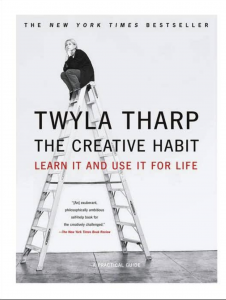How we find the idea
There are many books that have helped define our creative processes. In his groundbreaking book, “A Whole New Mind,” Daniel Pink sets the chronology of the creative, right-brain revolution that defines business from this point forward. Twyla Tharp has captured her amazing process in the book, “The Creative Habit.” That’s where I find the starting point: “Before you can think out of the box, you have to start with a box. She starts with a literal box (read the book). For me it’s more figurative, but incredibly helpful.
Limitations are the framework of creativity: the starting point. Creativity itself is the art of problem solving. Sometimes the problem is how to harness a disconnected dance concept, melody or verse into structure of a finished work. Sometimes it is the attempt to communicate an elusive emotion, memory, or experience on canvass. Human creativity can be seen as clearly in the sculptor’s studio or composer’s scribbling, as in the chemist’s lab and the physicist’s equation.
I think of it as optimistic limits. I start with an uncanny knowing that solution will come. Somehow, somewhere, through somebody, it will come. It’s a weird, half-full take on the situation, that believes that because this problem is here, so will the solution be. Most of the time, it’s waiting on us to slow down enough to see what’s hidden in plain sight.









